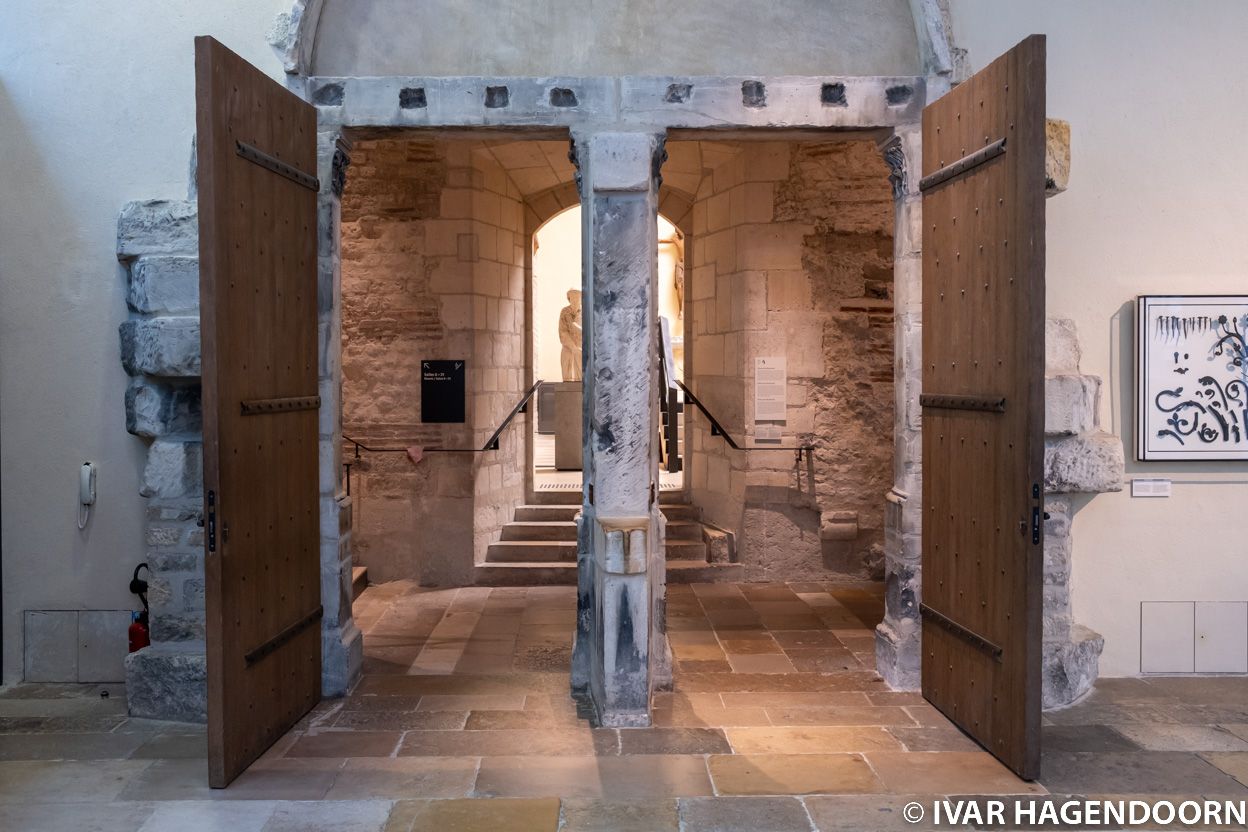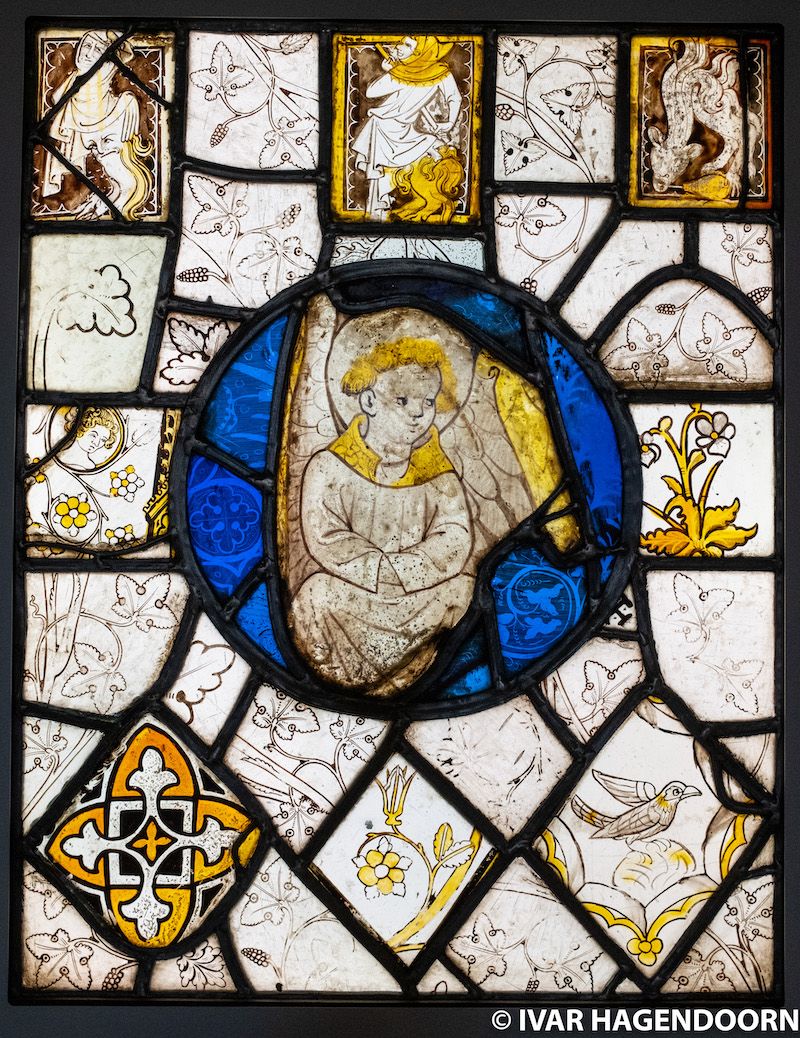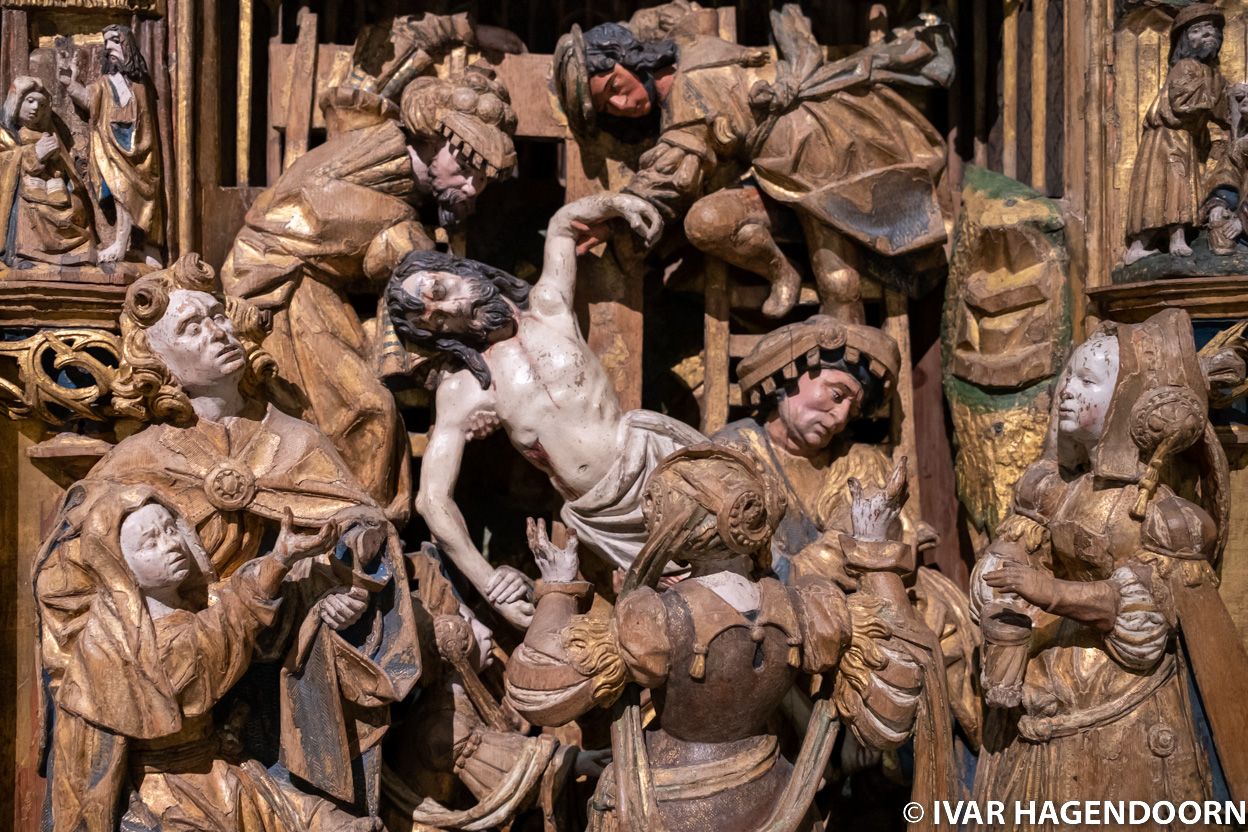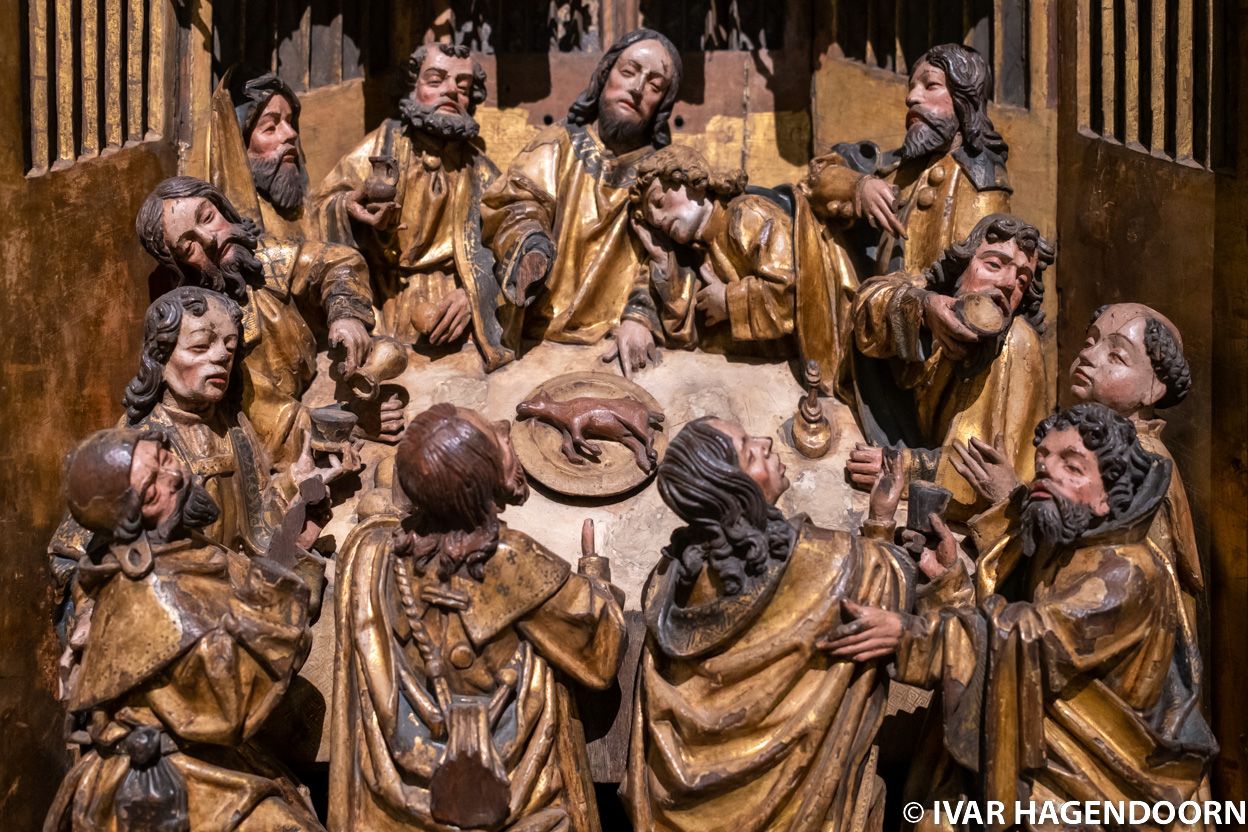
In 2022 the Musée de Cluny in Paris reopened after a decade-long renovation project. The result is pretty amazing. The architecture alone is worth a visit. The Musée de Cluny, also known as the Musée national du Moyen Âge (National Museum of the Middle Ages), is located at the heart of the Quartier Latin, at the corner of Bd Saint-Germain and Bd Saint-Michel. I must have walked by dozens of times, without ever wondering what’s behind the fence.
The museum is housed in a former medieval palace, the Hôtel de Cluny, which dates back to the mid-14th century and which was built on top of the remains of the third century Gallo-Roman baths known as the Thermes de Cluny. The latter’s frigidarium (cold room) has now been beautifully restored. For years the Hôtel de Cluny served as a townhouse for the abbots of Cluny. In the 19th century the building was purchased by a public servant, Alexandre Du Sommerard, to house his collection of art and artefacts from the Middle Ages. After his death, in 1842, both the building and his collection were acquired by the French state and the building was turned into a museum. In the following years the collection was greatly expanded and by 1885 the collection consisted of nearly 11,000 objects. In 1977, some 5,000 objects were transferred to the newly created Musée National de la Renaissance at the Château d’Écouen. As a result the museum’s collection now spans the period from late antiquity until the 15th century.
I must confess that I too tend to jump from antiquity to the Renaissance, while skipping the Middle Ages, which I associate with the collapse of the Roman empire, technological decline, mass migrations, feudalism, castles, the crusades, the plague and what not. But the Middle Ages, or at least the so called High and Late Middle Ages, which began around the year 1000, are also the period of Dante, Chaucer, Thomas Aquinas, Marco Polo, the founding of the first universities and Gothic architecture.
What better way to overcome your prejudices than to read a book (Valerie Hansen, The Year 1000, it’s on my pile) or to visit a museum dedicated to the Middle Ages?
The Musée de Cluny presents a chronological journey from antiquity to the 15th century through 21 rooms and more than 1,500 objects. One room presents a number of sculptures from Notre-Dame de Paris, including some fragments that were torn from the facade during the French Revolution and only rediscovered in 1977. The rooms dedicated to 13th century art include set of pieces from the Sainte Chapelle, stained-glass windows, funerary sculptures and a beautifully carved ivory casket representing scenes of courtly love.
It was interesting to see that the caskets in which Christian relics were stored have the form of a house with a roof. They are meant to be safe as houses, but they also point at the continuity between life and life after death. The dead also have to dwell somewhere and by that logic it makes sense to store the relics in a box in the form of a house. It was also interesting to learn that in the 14th century too there was technological progress, for example in the production of stained glass.

The first floor is dedicated to the 14th and 15th centuries in France, Italy and northern Europe and ends with one of the highlights of the collection: La Dame à la licorne (The Lady and the Unicorn) a series of six tapestries woven around 1500, which represent the five senses. Now you’re probably thinking, what about the sixth tapestry? You’re not alone. Scholars have offered various interpretations of the tapestry and its inscription, À Mon Seul Désir (To my only desire). The tapestry shows the lady placing the necklace that she wears in the other tapestries into a chest. This could be interpreted as the renunciation of earthly pleasures and an assertion of free will.


The final room presents some fine early 15th century altar pieces. I don’t normally spend much time looking at altar pieces, but unless you look closely you never discover anything. The artists went to great lengths to give each person some individuality, as can be seen in facial expressions and hair style. I also found it interesting that in more than one altar piece the cross was just an untreated, unadorned piece of wood.
There are a lot of museums and galleries in Paris. If you’re travelling to Paris I would recommend putting aside your prejudices and adding the Musée de Cluny to your list. It is well worth a visit.